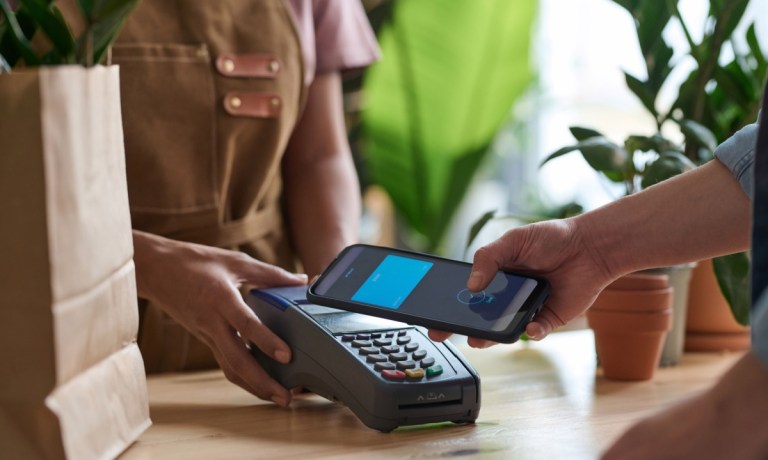
This week Rohit Chopra, director of the Consumer Financial Protection Bureau (CFPB), updated reporters about his agency’s efforts to scrutinize credit card reward programs.
What some may have missed in the conversation were Chopra’s additional comments regarding the CFPB’s plans to also look closer at buy now, pay later (BNPL) providers, because — according to Chopra — some are using personal data to “induce more purchasing or borrowing” on the part of consumers.
It’s no secret that the CFPB has long had its eye on BNPL providers and practices, just as it’s also no secret that consumers continue to embrace BNPL purchase options.
As PYMNTS Intelligence discovered in compiling its FinTech Tracker®, “Beyond the Headlines: Understanding BNPL’s Impact on Consumers,” BNPL resonates so strongly with U.S. consumers that — in a single month last year— they used it for a record-setting $9.3 billion in sales.
BNPL enables shoppers to buy items using short-term financing that has brief, scheduled payment periods and low-to-no interest charges if all payments are made. And despite concerns on the part of regulators, PYMNTS Intelligence finds that arrangement resonates with shoppers — especially younger ones. Half of U.S. consumers between ages 25 and 44 have used BNPL at least once.
This popularity reaches across the pond as well. “Beyond the Headlines: Understanding BNPL’s Impact on Consumers” also looked at shoppers in the U.K. and found that many U.K. shoppers use BNPL less as a convenience and more as a financial lifeline. Nearly one-third of U.K. consumers use BNPL, and 77% say it serves as a financial guard rail, keeping them clear of high-interest credit card debt.
Another PYMNTS Intelligence report, “The Credit Accessibility Series: BNPL’s Wide-Ranging Impact on Consumers and Merchants,” which reflected survey data from more than 3,100 consumers, determined there are actually many reasons shoppers opt for BNPL buys. Chief among them is to help them better manage their cash flow, something 71% identified as an important incentive.
In fact, for more than half of consumers, helping manage cash flow is the main reason they buy using BNPL. For nearly 28%, the low- or no-interest rate option is the main motivator, while nearly that share say they use it because they’ve had favorable BNPL experiences in the past. More than 17% say BNPL helps fortify their credit scores.
One assumption may be that cash-strapped consumers would be especially vulnerable to the lure of BNPL. However, “The Credit Accessibility Series” found less than 20% of consumers who live paycheck to paycheck (and say they have trouble keeping up with their bills) currently use BNPL. Another 13% of those same consumers say they have paid off their BNPL balances or they don’t intend to use BNPL again. Dire financial circumstances don’t appear to serve as a major influence on any significant BNPL activity, with approximately 18% of those earning more than $100,000 annually, a larger share, using BNPL.
The appeal of short-term, no- or low-interest loans does reach across age groups. As mentioned, BNPL is especially popular with younger consumers, with more than 14% of Gen Z consumers using BNPL and 20% of millennials. Nineteen percent of bridge millennials and nearly 18% of Gen X shoppers also opt for BNPL. Baby boomers and seniors trail with only 11% carrying BNPL balances, reflecting perhaps the fact that a portion of this demographic lives on fixed incomes with modest purchasing needs.
None of these numbers showing the surge in the BNPL usage is intended to downplay regulatory concerns. When consumers have the option to defer payments, anxiety over debt risk and the need for consumer protections is understandable — especially against the backdrop of today’s economic uncertainty.
And it’s not just Rohit Chopra and other CFPB officials who are voicing concerns. As “Beyond the Headlines: Understanding BNPL’s Impact on Consumers” reports, there are also calls for tighter BNPL regulation in the U.K., and officials in Australia are voicing similar concerns. Meanwhile, FinTechs such as PayPal are working with regulators in an effort to bring greater transparency and user protections to BNPL.
But as PYMNTS Intelligence data confirms, for many consumers BNPL has proven to be not so much an invitation to go on extravagant shopping sprees, but instead a tool to be deployed strategically to help manage their cash flows, build credit scores and dodge the high-interest credit card purchases.